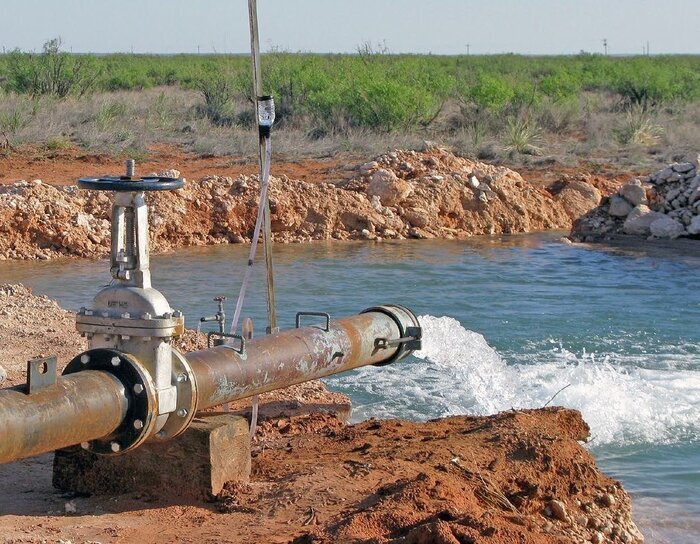Illegal wells are a blight on wetlands

TEHRAN - February 2nd marks World Wetlands Day. Wetlands cover around 6 percent of the Earth’s land surface and 40 percent of all plant and animal species live or breed in wetlands.
They play an important role in coastal environments and economies, health, food supply, tourism, and jobs.
Wetlands are providing essential ecosystem services such as water regulation, including flood control and water purification.
More than a billion people across the world depend on wetlands for their livelihoods – that’s about one in eight people on Earth.
Managing wetlands is a global challenge and the Convention presently counts 172 countries as Contracting Parties, which recognizes the value of having one international treaty dedicated to a single ecosystem.
The Ramsar Convention uses a broad definition of wetlands. This includes all lakes and rivers, underground aquifers, swamps and marshes, wet grasslands, peatlands, oases, estuaries, deltas, tidal flats, mangroves, and other coastal areas, coral reefs, and all human-made sites such as fish ponds, rice paddies, reservoirs, and salt pans.
The Convention on Wetlands is an intergovernmental treaty that provides the framework for the conservation and wise use of wetlands and their resources.
It was adopted in the Iranian city of Ramsar in 1971 and came into force in 1975. Since then, almost 90% of UN member states, from all the world’s geographic regions, have acceded to become “Contracting Parties”.
In Iran, 141 wetlands with ecological value with an area of over 3 million hectares have been identified, of which 25 wetlands are designated as wetlands of international importance (registered in the Ramsar Convention) covering more than 1.4 million hectares and four sites are biosphere reserves.
Blight of illegal wells
However, wetlands are among the ecosystems with the highest rates of decline, loss, and degradation.
Unfortunately, wetlands are disappearing three times faster than forests and are Earth’s most threatened ecosystem. In just 50 years — since 1970 — 35% of the world’s wetlands have been lost.
In Iran, the excessive increase of illegal wells has endangered the life of wetlands.
Statistics show that the number of unauthorized wells has increased from 15,000 to 400,000 in the last five decades, which has caused many of the country's plains and wetlands to dry up, IRNA reported.
Over the past few years, we have been continuously hearing unpleasant news about the country's water situation. Drought and low rainfall have caused many problems and exacerbated the situation.
All of them indicate that the condition of reservoirs and underground water resources is not favorable.
Of course, in the past few weeks, there has been good rainfall throughout the country. According to the Ministry of Energy, about 40 percent of the country's dam reserves have been filled.
But experts believe that the drought and a lack of water in the past few years were so great and destroyed the water resources that these rains do not compensate for all the lag.
Official data show that about 90 percent of the country's area is affected by drought with different severity and weaknesses. Also, about 270 cities in the country are suffering from water stress.
On the other hand, wear and tear of water transmission pipelines cause 25 percent of water to be wasted in the supply network, which causes 650 trillion rials (about $1.6 billion) in the form of accumulated losses.
When this situation occurs, various measures are taken to compensate for it, such as the construction of deep wells in places where the plains are located.
The high number of these wells means that there is no more capacity for underground water sources.
In this situation, many problems occur in different sectors, including the environment. Wetlands are one of the areas where wells endanger their life.
If we take a look at the process of drilling wells in the country, both authorized and unauthorized, we can see that the exploitation of underground water in the plains has intensified in the last four decades.
Statistics show that in the 1970s, there were about 15,000 unauthorized wells in the country, but now it has increased to more than 400,000.
The effect of this process is very dangerous for the life of wetlands and their watershed basins.
The drilling of deep wells in the plains and agricultural fields causes irreparable damage to the country's wetlands.
The impact of this process on wetlands, especially wetlands whose catchment area is closed, is much greater so it can have a greater effect on the drying of that wetland than other wetlands.
A closed basin means that water does not enter the wetland from outside the basin.
For example, Lake Urmia, Parishan, Agh Gol, and Zaribar wetlands have closed watershed basins.
This problem may have originated from our policies in line with agricultural development and self-sufficiency in products, but we were unaware that it was not in accordance with the capacity of the lands.
In some cases, it cannot be compensated anymore, and in this situation, the wetland that was once a source of life for an area has become a center of dust.
Leave a Comment